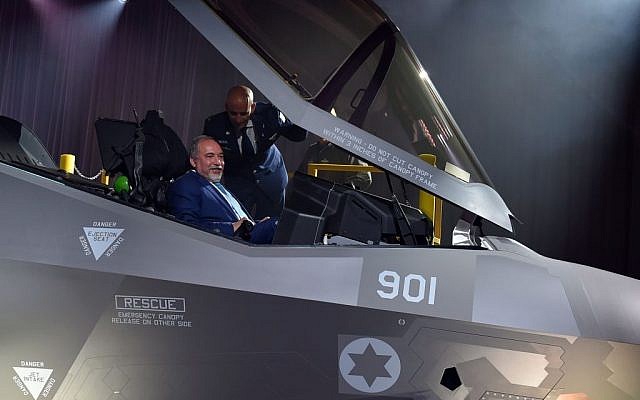News update for 26 January 2020: Lockheed adds Dunford, former top US military officer, to board
News update for 31 January 2020: DoD Tester's Report: F-35 Is Still a Lemon
________
Source: Fort Russ
By Drago Bosnic | January 26, 2020
MOSCOW – Russia's next-generation long-range radar technology has been able to detect a group of 6 fifth-generation F-35 multirole fighter jets near the Iranian border. This was achieved by a radar that has a specific mode of operation which uses the ionosphere when scanning airspace.
Missile and air defense radars control airspace around the Russian Federation over distances of up to several thousand kilometers. This was noted by Russian Foreign Minister Sergei Lavrov, who said that long-range air defense radars detected 6 fifth-generation F-35 multi-purpose fighters near Iranian airspace just hours after a missile attack on US military bases in Iraq.
According to the head of Russian Ministry of Foreign Affairs, "at that moment, at least six F-35 fighters were detected near the Iranian border. This information needs further confirmation, however, it indicates the seriousness of the situation which has further increased tensions in the region," RG, a Russian web portal, stated.According to military experts, at present, an over-the-horizon extremely long-range radar system is actively used by the Russian military's air defense units. The official name of the system is "Container" (29B6) (Russian: 29Б6 «Контейнер»). What is particularly interesting is that US claims the F-35 is the most advanced stealth design in the world, virtually "invisible" to any radar system. However, the claim has just been proven an absolute nonsense given that long-range next-generation systems can detect them thousands of miles away from Russia's borders.
The state testing of the "Container" radar station was successfully completed last year, when it was immediately put on operational combat duty. Its principle of operation is unique and can be considered a real breakthrough in the field of radar technologies.
For example, if a standard radar within a long-range air defense system or a dedicated radar unit can detect and track an air target at distances up to 400km, the "Container" radar station does the same at 2000 km. Practically, this radar covers the airspace of all NATO member states in Europe. Thanks to its superior capabilities, any possible surprise air attack against Russia is ruled out.
The first "Container" radar station was put on trial duty on December 1, 2018. This station covers airspace to the west and south of the borders of Russian Federation. The next station of the same type will cover the entire Arctic airspace (including all routes running across the North Pole).
The "Container" radar complex specializes in detecting and tracking aerodynamic objects, such as jets or cruise missiles. The principle of its work is very simple. The radar antennas emit electromagnetic waves at a certain angle, which bounce around the ionosphere and reflect beyond the horizon over distances of several thousand kilometers. These waves then return the same way back to the antennas, and display their results on the display of the operator in control of the complex. When examining the first "Container" complex, which was installed near Kovilkino, south of Nizhny Novgorod, operators were able to see the complete picture of airspace above virtually all of Western Europe.
In the meantime, the Russian military managed to acquire a complete radar coverage over all of Russian airspace. It also serves as an early warning system for ballistic missiles of different types and ranges. The main element of this complex system are the state-of-the-art "Voronezh" extremely long-range radar stations.
________
Ed.'s note: Israel's previous Defense Minister of Israel from 2016 to 2018, Avigdor Lieberman, is a Soviet-born Israeli politician. He was born to a Russian-speaking Jewish family in Kishinev, Soviet Union. Lieberman served as Israel's Minister of Foreign Affairs from 2009 to 2012, and again from 2013 to 2015. He has also served as member of the Knesset and as Deputy Prime Minister of Israel. During the 1990s approximately one million Russian-speaking immigrants arrived in Israel. Many of these Russian-speaking immigrants who arrived in Israel had engineering and scientific backgrounds. Lieberman arrived in Israel during this mass migration where he became Israel's defense minister. Here he sits and presumably has access to Lockheed Martin's technology loaded on the Lockheed Martin F-35. One wonders how many Russian spies migrated to Israel during the 1990s? Today in Israel, there are many Russians and Ukrainians who might not even be Jewish. There are also quite a few Russian immigrants who after receiving an Israeli passport, leave back for Russia. Leaving back for Russia and Ukraine with technology?
Da Aliyah // Two Decades On, Wave of Russian Immigration to Israel Is an Outstanding Success
Avigdor Lieberman, is a Soviet-born Israeli politician sits in the cockpit of an "American" Lockheed Martin F-35 advanced fighter.
Related:
An F-35 Is Only as Good as Its Country's Leaders
Israel Science and Technology: Lockheed Martin
There might be a few inadequacies here calling it a "stealth" fighter. How "stealthy" can the F-35 fighter be when it can be "seen" 1,500 kilometers away?
Lockheed Martin delivers 134 F-35 stealth fighters in 2019


No comments:
Post a Comment
Note: Only a member of this blog may post a comment.